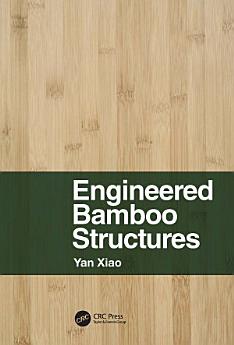Engineered Bamboo Structures
ამ ელწიგნის შესახებ
შეფასებები და მიმოხილვები
ავტორის შესახებ
Yan Xiao is a Distinguished Professor of Civil Engineering, Director of Energy, Environment and Sustainable Systems Sciences Center, in the Zhejiang University – University of Illinois at Urbana Champaign Joint Institute (ZJUI). He is also a research professor in the Sonny Astany Department of Civil Engineering, University of Southern California, where he has been a faculty member since 1994, and was promoted to tenured full professor in 2007. Dr. Xiao received his Bachelor of Engineering degree from Tianjin University, China, in 1982, his Master and Doctor of Engineering degrees from Kyushu University, Japan, in 1986 and 1989, respectively. Xiao’s professional and academic experiences also include research engineer at Aoki Corporation, Tokyo, Japan, Post-doctoral fellow, Lecturer and Assistant Research Scientist at the University of California, San Diego. He was previously the Dean of the Civil Engineering College at the Hunan University, and the Nanjing Tech University. Prof. Xiao serves as an associate editor for the American Society of Civil Engineers (ASCE) Journal of Structural Engineering, Journal of Bridge Engineering, and editorial board member of the Elsevier Journal of Constructional Steel Research. He is an elected fellow of the American Society of Civil Engineers (ASCE), and fellow of American Concrete Institute (ACI). He holds a Professional Engineer license in California. Prof. Xiao is an expert in structural engineering with overall goal towards sustainable development, and has made well known contributions in areas related to confined concrete, hybrid and composite structures, applications of advanced composites, retrofit/repair of structures, impact effects, and large-scale experimentation, etc. He has carried out numerous important research projects as principle investigator, including US NSF projects, US-FEMA and FHWA projects, NSF China National Key Research Projects, General projects, etc. His recent research and industrial development efforts are focused on developing modern bamboo structures with the goal of promoting environmentally and eco-friendly construction. He holds many patents and the award-winning technology glubam. In 2008, he was awarded the Best of What’s New in 2008 by the Popular Science Magazine, and was named as the Innovator of 2008. He also made important impact in integrated protection of engineering structures, particularly related to earthquake and other man-made hazards mitigation. He has more than 400 publications including more than 120 SCI indexed papers.






